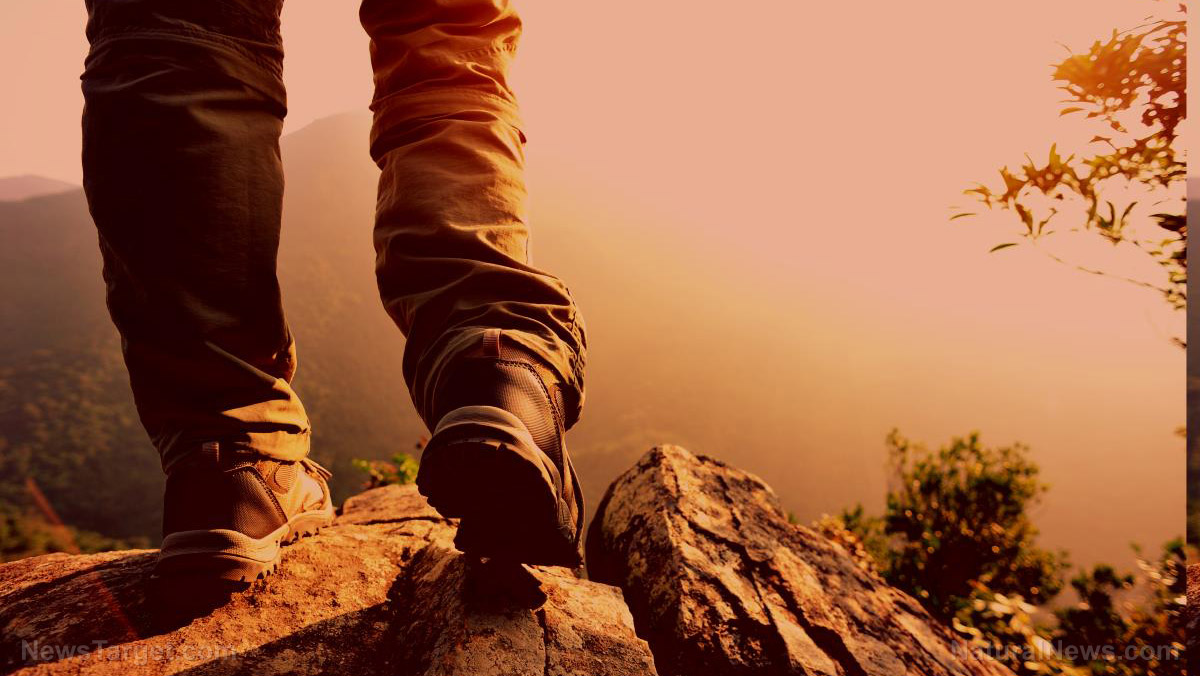What goes on in our brain while we walk? Researchers track how vision guides foot placement
06/06/2018 / By Edsel Cook

Texan researchers have wondered about what our brains are thinking during walks. In a NewsWise article, they studied the way people’s vision directed the placement of their feet while walking.
Their findings will benefit patients who cannot move well due to aging, Parkinson’s disease, and strokes. It will also help the development of prosthetic and robotic limbs.
If you want to get across natural terrain as quickly and safely as possible, you need excellent coordination between your eyes and your body. Researchers still don’t have a good idea of how our various body parts cooperate across uneven terrain. (Related: Feel happy IMMEDIATELY by just knitting; scientists say working with your hands positively affects the neurochemistry of your brain.)
Researchers tend to study vision separately from locomotion. They also hold their experiments in rigidly controlled laboratories instead of outdoors.
The University of Texas in Austin (UT Austin) changed that up. Researcher Jonathan Matthis of UT Austin’s Center for Perceptual Systems noted how every part of our perceptuomotor system pitches in during visually guided walking.
“To really understand it, you need to know how vision works, how planning works, how muscles work, how spines work, how physics work,” he said. His team published their findings in the journal Cell.
Eye movements are the windows into the walker’s mind
Matthis took advantage of new motion-capture and eye-tracking technologies to identify notable patterns between the eyes and movement. He and his team put a welding mask around an infrared eye tracker to protect its cameras from sunlight. They also used a motion-tracking suit to calibrate the tracker.
In the experiment, participants crossed three different types of terrain: Flat, medium, and rough ground. The eye tracker recorded their gaze and full-body kinematics.
Matthis believed eye movements offered important clues about the thought processes of people. Tracking the eyes pointed out the kind of information that the brain needs for a task.
The UT Austin research team reported that the subjects showed different gaze and walking patterns for each terrain. Participants took quicker and longer strides when crossing flat ground and spent just half the time looking for obstacles.
As they moved into rougher terrain, subjects took shorter and slower steps that varied according to the ground. They also studied the ground more than 90 percent of the time to find solid footholds.
In the medium ground, participants looked for solid footing within two steps. In the roughest terrain, they divided their gaze between searching for good footholds a bit further out and planning out their path.
No matter the terrain, walkers always practice 1.5-second lookahead timing
The researchers also reported a surprising pattern. No matter what kind of terrain they traversed, participants always looked 1.5 seconds ahead of them.
Earlier studies discovered a similar “lookahead” timing involving research or motor actions like climbing stairs, driving vehicles, and reaching for objects. This timing could be very important when it comes to directing human movement.
Matthis believed the regular lookahead timing hinted at an overall movement strategy that the walker uses and adjusts according to the terrain. People use vision to figure out what they can expect 1.5 seconds ahead of them.
This led him to theorize that a good action decision needed information and consideration of the pros and cons. The best way to bring out this human behavior is to take the research into a natural environment.
“This gives us more opportunity to discover things we didn’t expect, which will help us advance our scientific knowledge to the benefit of improving clinical treatment of gait-related disorders,” Matthis said.
Learn more about how your brain works during innocuous actions like walking at Brain.news.
Sources include:
Tagged Under: brain activity, brain function, brain tracking, eye movements, eye-foot coordination, foot placement, gait-related disorders, hiking, lookahead timing, motor actions, natural environment, natural terrain, terrain, thought processes, vision, walking
RECENT NEWS & ARTICLES
COPYRIGHT © 2017 BRAIN NEWS


















